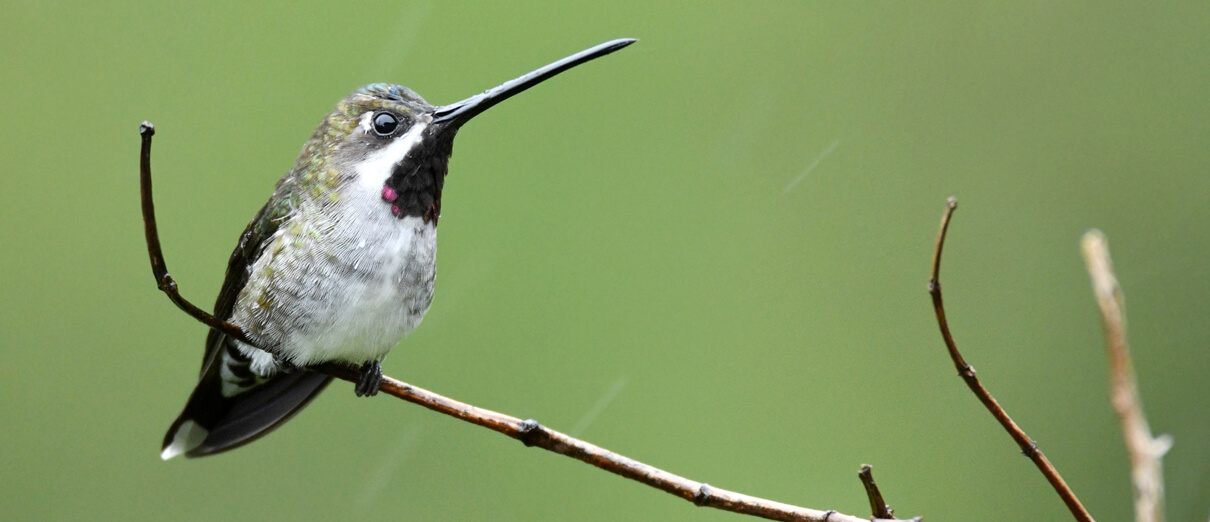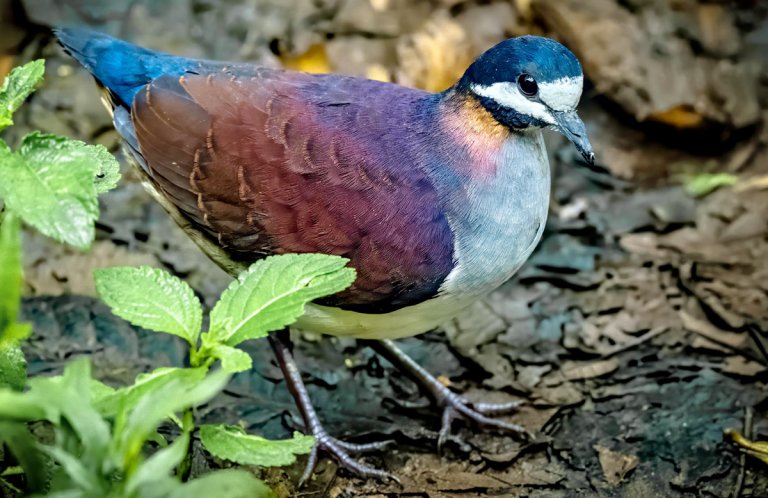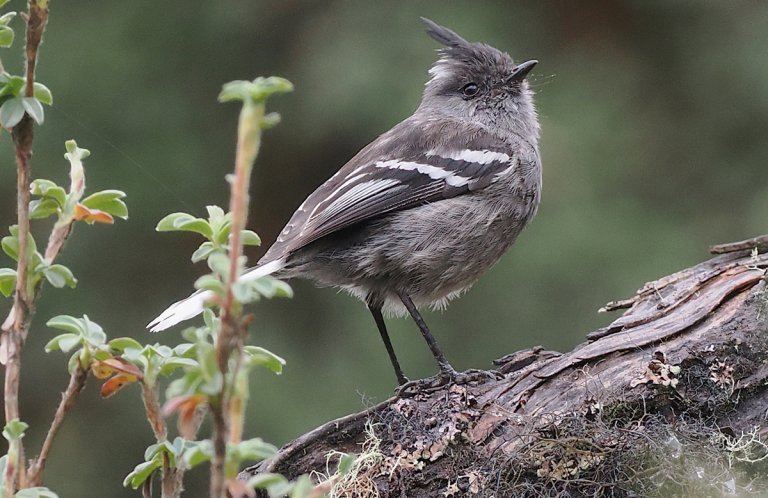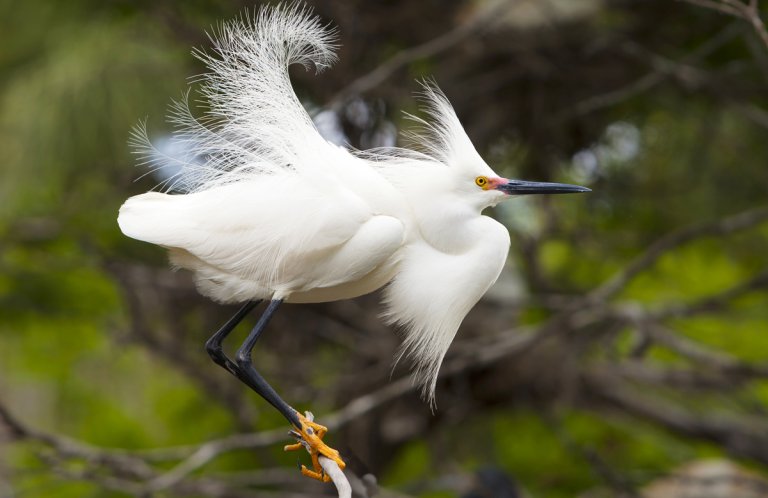
Long-billed Starthroat range map by ABC.
The lovely Long-billed Starthroat is rather large for a hummingbird; at four inches long, it's about the same size as a Violet-crowned Hummingbird or Royal Sunangel. The male of this species is particularly striking, with a shining, light-blue crown and glowing magenta-purple throat.
Both sexes have long, slender, black bills for which this Latin American species is named, as well as a white spot behind each eye and a white streak on the lower back, which is often difficult to see.
In a family of birds with evocative names, the Long-billed Starthroat's English name fits it especially well. But its Latin names both echo part of the English name and evoke a different “spirit” in this bird.
In Search of Sun
The Long-billed Starthroat's genus name Heliomaster comes from the Greek words meaning “sun seeker" or "sun searcher” — an apt description for a bird that spends a lot of its time high in the forest canopy. Its species name longirostris is Latin for “long billed,” giving the nod to one of this hummingbird's most prominent field marks.
Bridging Two Continents
The Long-billed Starthroat is uncommon throughout its large, somewhat disjunct range. It can be found from southern Mexico to Panama, then in South America from Colombia south and east to Bolivia and Brazil, and also on the Caribbean island of Trinidad. Within this range, it frequents the canopy of second-growth forests, forest edges, and open areas including agricultural fields, coffee plantations, and suburban gardens.
Three Long-billed Starthroat subspecies are currently recognized. This hummingbird does not make long-distance migrations, but may undertake short seasonal movements to follow shifting food sources.
While feeding, the Long-billed Starthroat frequently emits a squeaky "wheet" or “tseep.”
Listen here:
(Audio: Caio Brito, XC427439. Accessible at www.xeno-canto.org/427439)
Insect Hawker
Like other hummingbirds, the Long-billed Starthroat feeds heavily on nectar, but its long bill allows it to forage at larger, longer flowers than can smaller relatives such as the Snowcap or Ruby-topaz Hummingbird. Like many other hummingbird species, including the Rainbow Starfrontlet and Rufous Hummingbird, it employs a feeding strategy known as “traplining,” in which the bird visits widespread nectar sources in a regular, repeated sequence. Individuals may also defend particularly flower-rich trees.
The Long-billed Starthroat can also be spotted hovering high in the forest canopy and over clearings and streams as it snatches small insects in mid-air, a foraging method known as “hawking.” It also gleans insects from foliage high in the trees. Sometimes, this bird descends to visit backyard feeders or water sources.
Flying Solo
The Long-billed Starthroat is a solitary creature, as are other hummingbirds, living independent of any sort of lasting pair bond. During the nesting season, males hold down a territory, which females visit briefly to mate. Both sexes may mate with multiple partners. The females then go their own way to choose a nest location, build a nest, and raise young.

Long-billed Starthroat. Photo by Gualberto Becerra, Shutterstock.
Interestingly the female Long-billed Starthroat doesn't seem too concerned about hiding her shallow, cup-shaped nest, often building it on a fairly low, exposed horizontal branch, or even on a telephone wire. However, her nest is well-camouflaged with mosses and lichens, so, for predators, it's probably tough to see, even in an open location.
The average Long-billed Starthroat clutch is two tiny eggs, which the female incubates alone. The young hatch blind and featherless, but grow quickly on a diet of regurgitated insects provided by the female. The chicks leave the nest when they are just over two weeks old.
Uncommonly Adaptable
Although it is uncommon in most areas, the Long-billed Starthroat seems able to tolerate some degree of human-caused habitat disturbance, as it favors edges and open spaces.
This striking hummingbird can be seen at more than 20 ABC-supported locations in Latin America, including Costa Rica's Osa Verde Lodge, Colombia's El Dorado Reserve, and Ecuador's Buenaventura Reserve.
Donate to support ABC's conservation mission!



















































